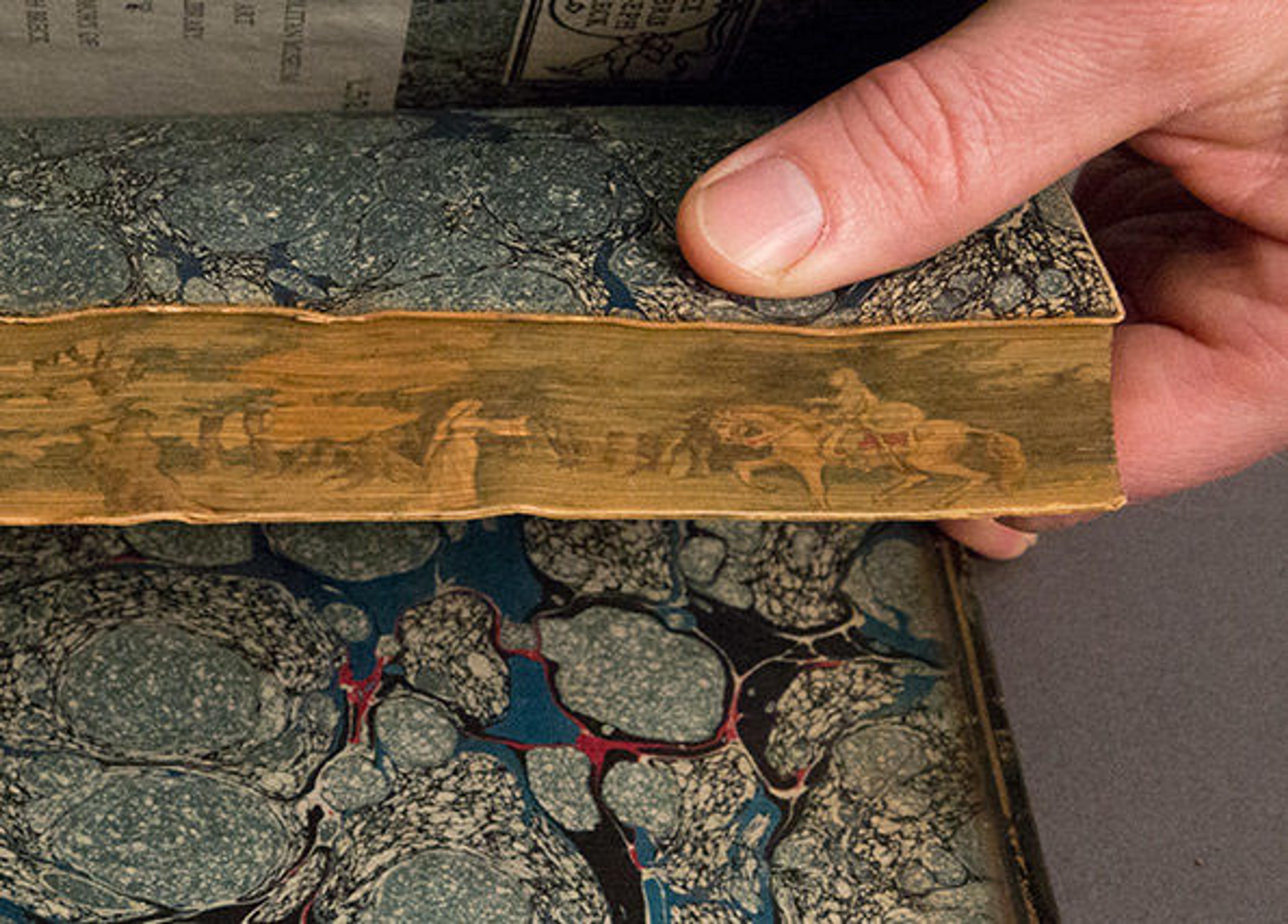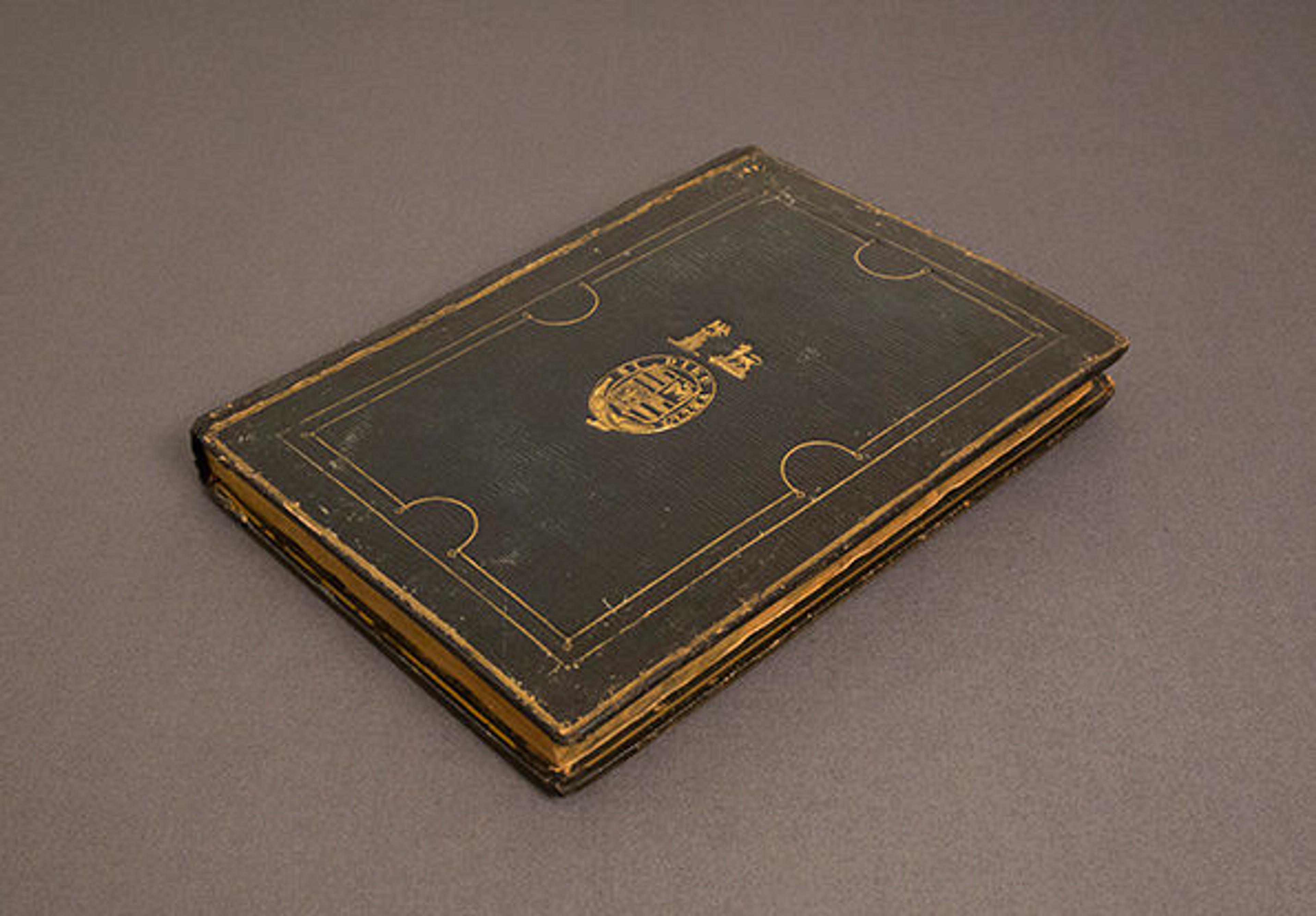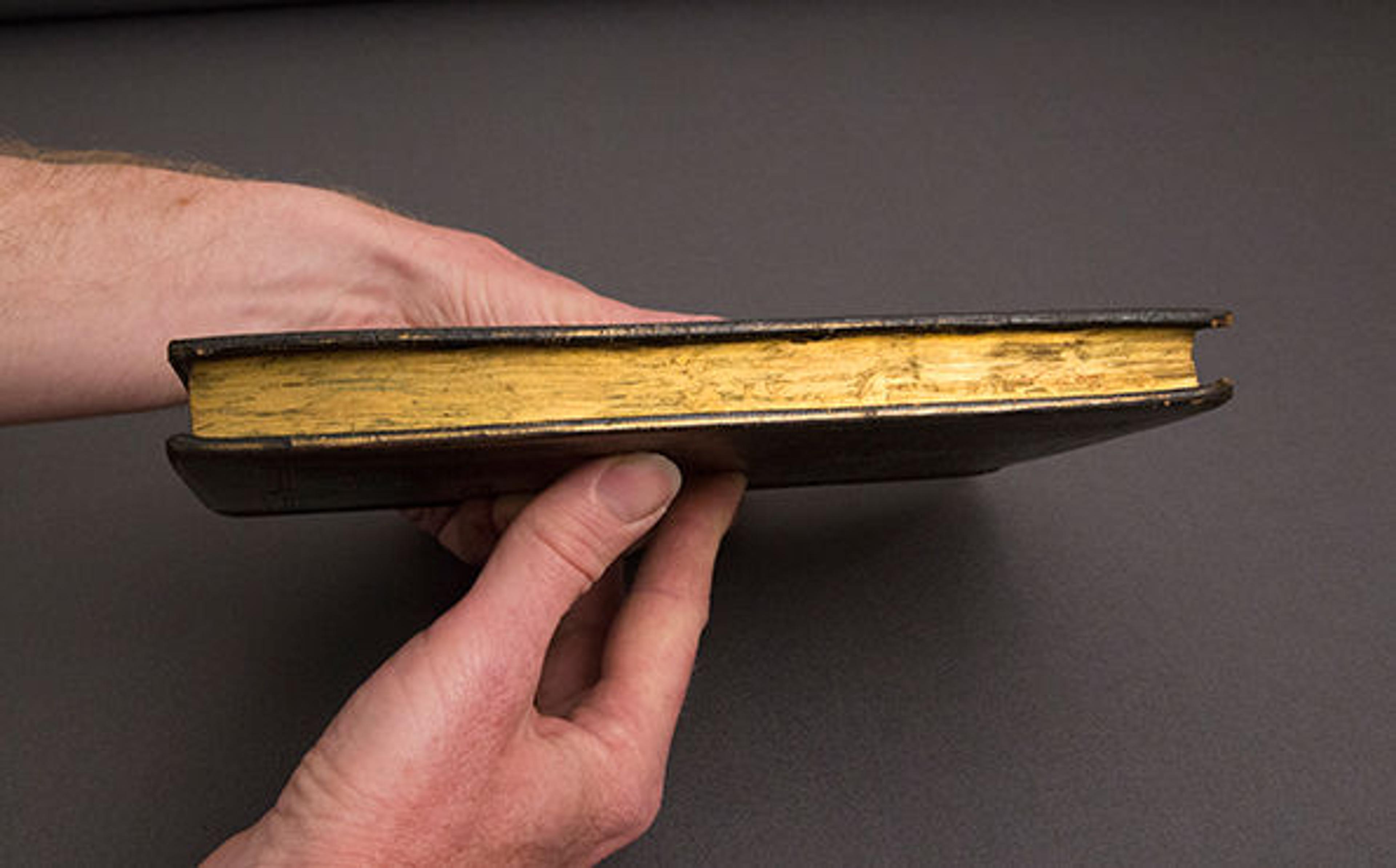A (Disappearing) Fore-edge Painted Book at The Cloisters Library

A lady and knight decoration on the fore-edge of the text block
«Fine book designers, binders, publishers, and collectors delight in unique methods to distinguish their objects. A book's cover or its spine is generally the first area a prospective purchaser or reader is likely to see, so it's natural that you'll often find eye-catching features there.»
Periodically, though, it's the edge of the pages—the fore-edge of the text block—that's chosen as a location for decoration. In fine books produced before World War I, it's quite common to see this area applied with gold leaf or dyed with a solid color. Less common are text-block edges decorated with patterns stamped, marbleized, or even branded into the paper. Rarer still are fore-edges used as a surface to hand-paint an image, a portrait of the author, or an illustration of a scene depicted in the book.

Fabliaux or tales: Abridged from French Manuscripts of the XIIth and XIIIth Centuries, compiled by Pierre Jean-Baptiste Legrand d'Aussy (London: W. Bulmer and Co. Shakespeare Press, 1796)
And then there is the secret, or "disappearing," fore-edge painting, in which the reader must flair, or slightly bend, the pages of the book to reveal the image. An example of this is housed at The Cloisters Library: an English translation of a collection of French medieval legends, Fabliaux or tales: Abridged from French Manuscripts of the XIIth and XIIIth Centuries, compiled by Pierre Jean-Baptiste Legrand d'Aussy (London: W. Bulmer and Co. Shakespeare Press, 1796).

The fore-edge secretly holds a pastoral scene of a knight on horseback, riding to greet a lady
An otherwise unassuming little book, the fore-edge secretly holds a pastoral scene of a knight on horseback, riding to greet a lady in a secluded wood separated from a castle's grounds by a flowing brook. Slight bending of the text block not only reveals the image, but almost animates the horse's legs, the rustling leaves of the trees, and the arms of the woman.

Slight bending of the text block reveals the image
This book was part of the personal library of Joseph Breck, director of The Cloisters when in its original location. Much of Breck's book collection went on to form the core of new Cloisters Library following his unexpected death in 1933. It's not known where this book resided directly prior to Breck (and a previous bookplate appears to have been removed to make way for the library's), but the gilt stamp of the front cover indicates that it was bound for English magistrate Charles James Preston (1818–1896), so it's possible that the fore-edge painting may have been done at his request, a few decades after the original printing.*
*Thanks to R. Theo Margelony of the Department of Medieval Art and The Cloisters for identifying Preston from the heraldic insignia of the book's stamp.
Michael Carter
Michael Carter is the associate Museum librarian at The Met Cloisters.